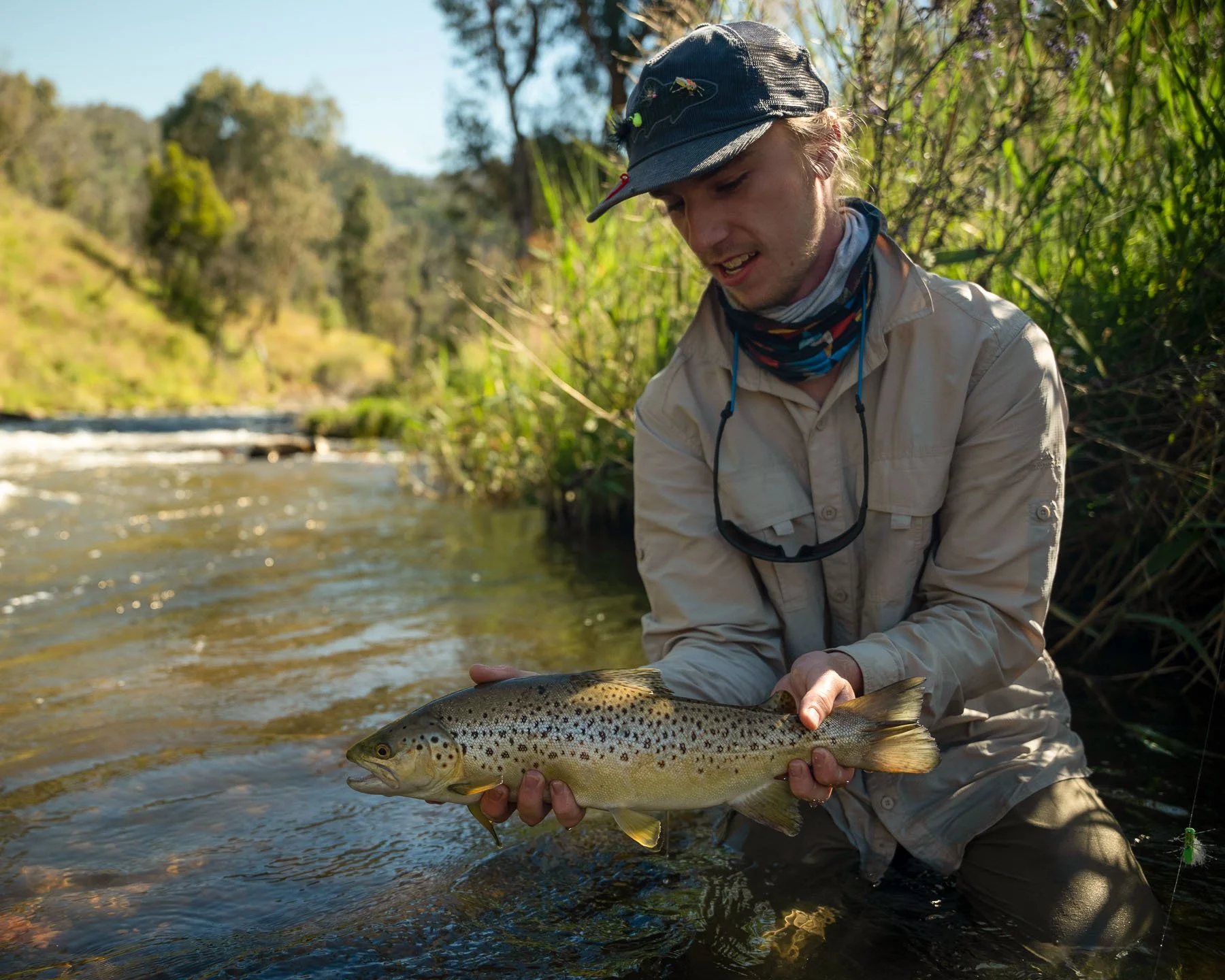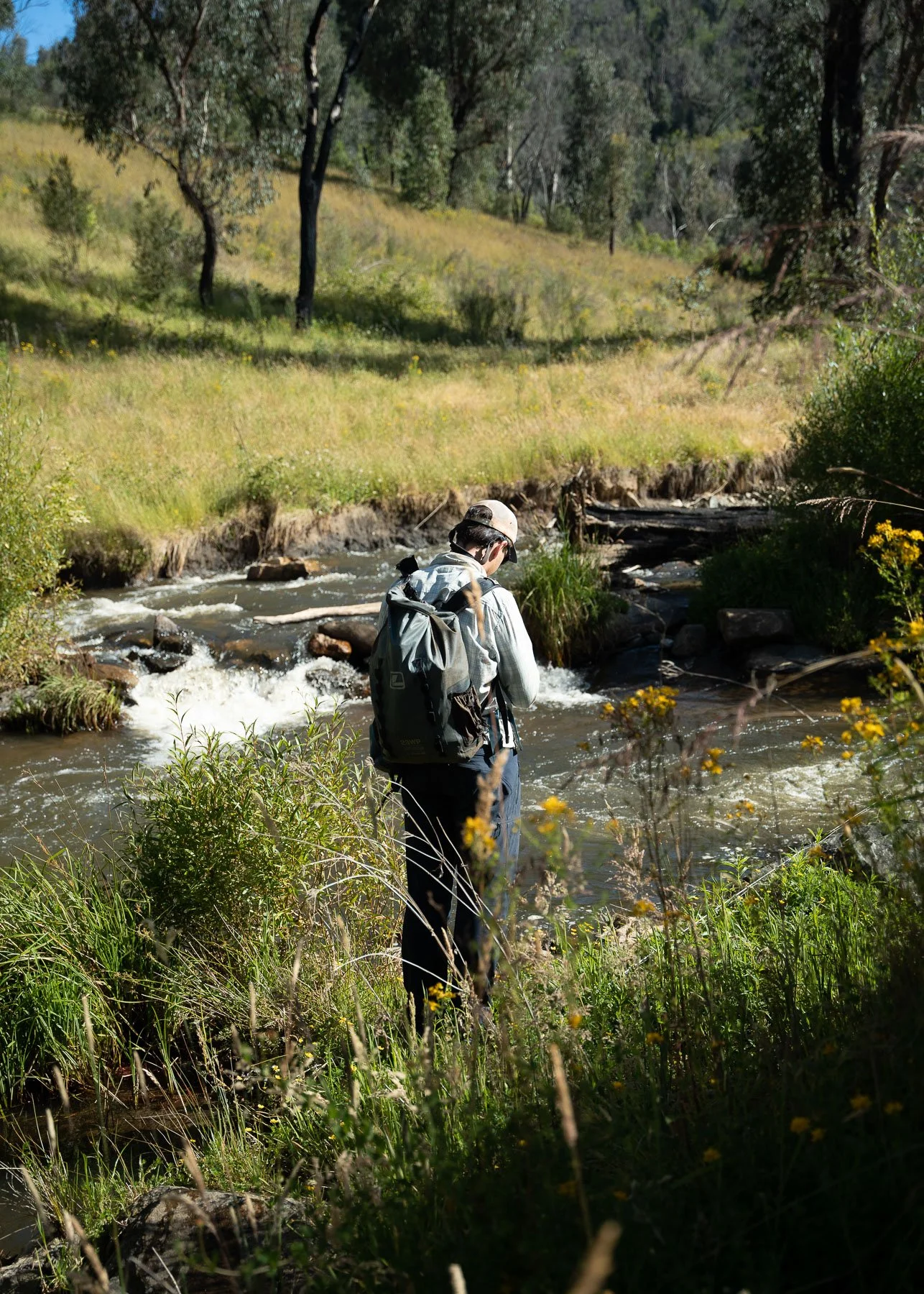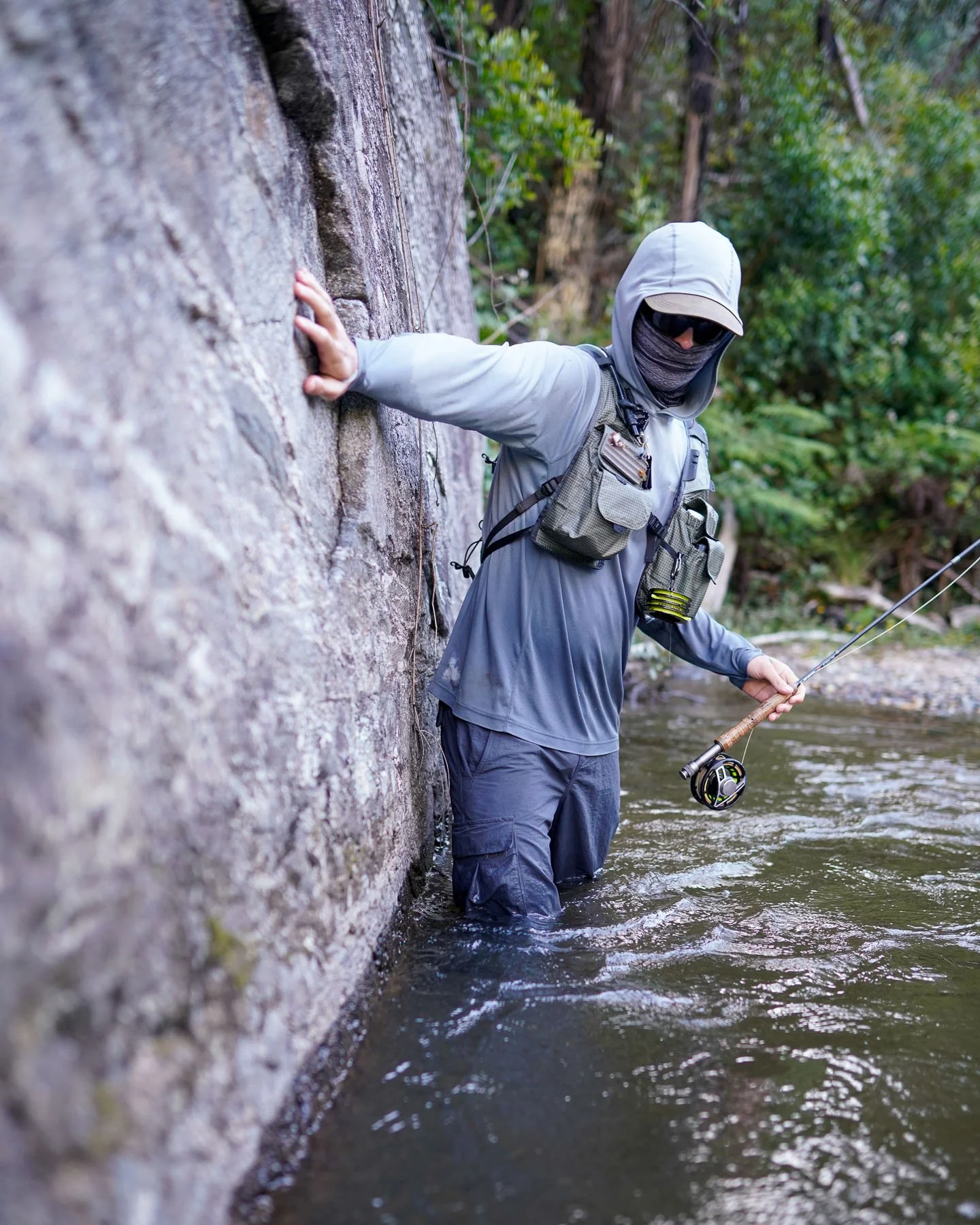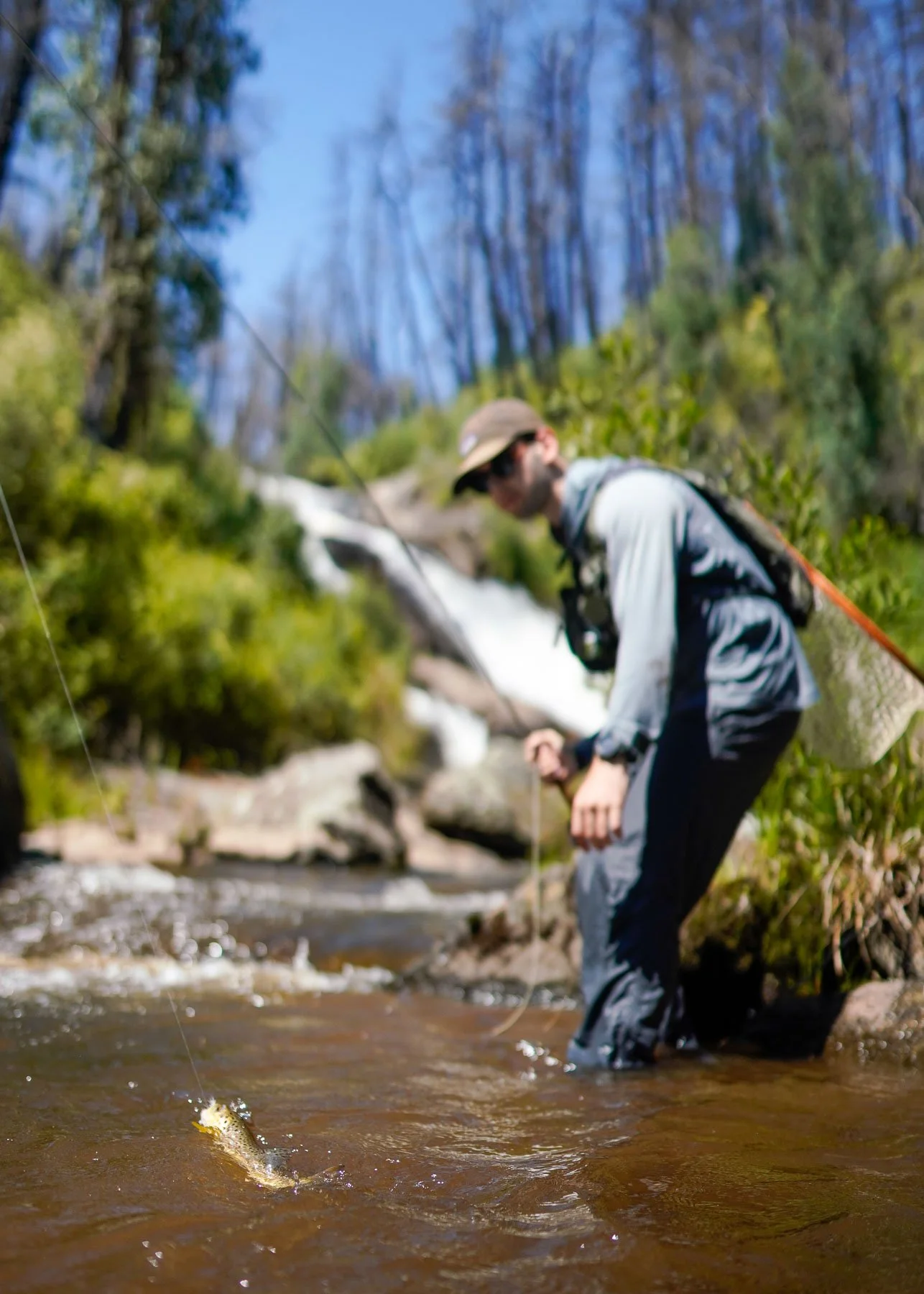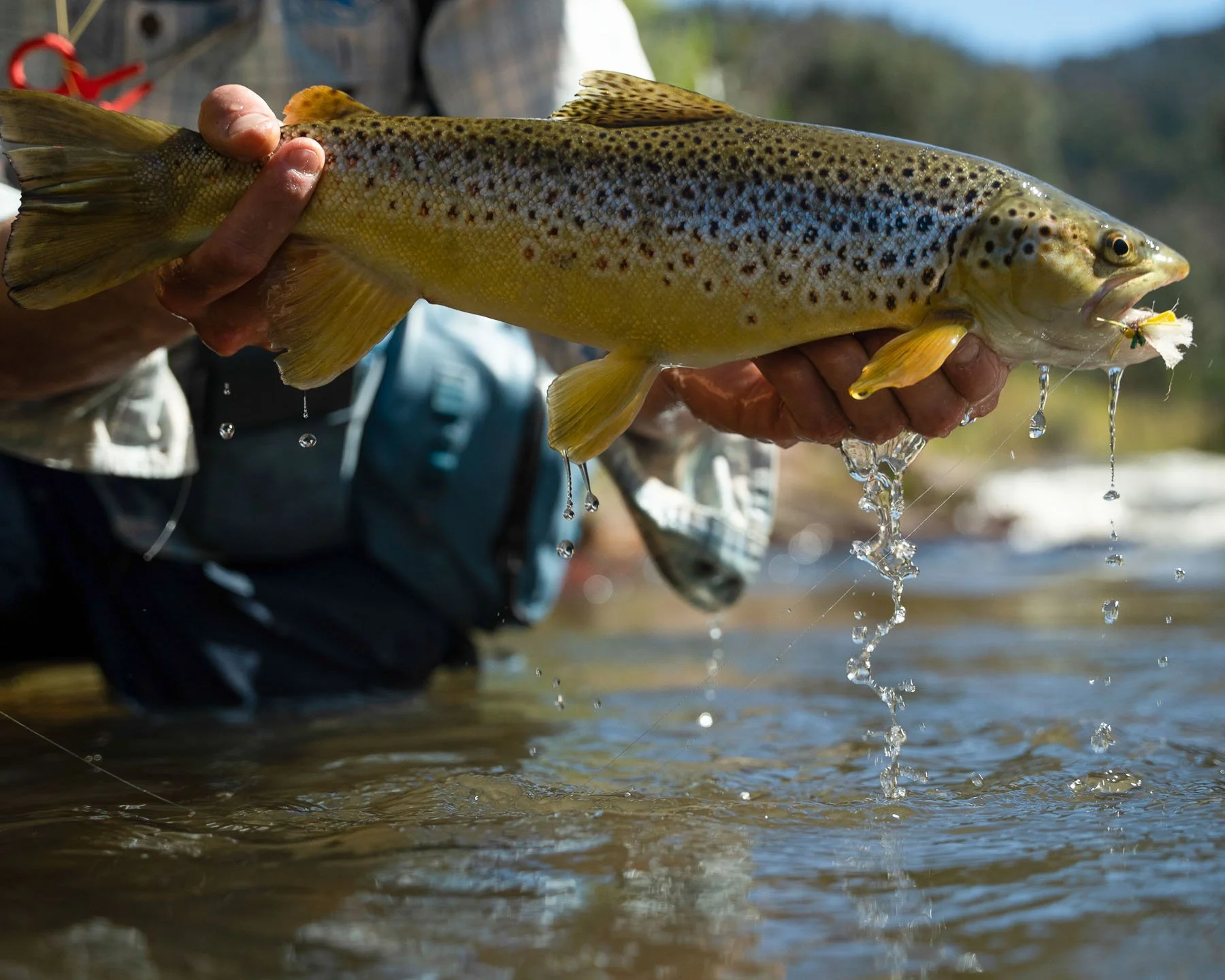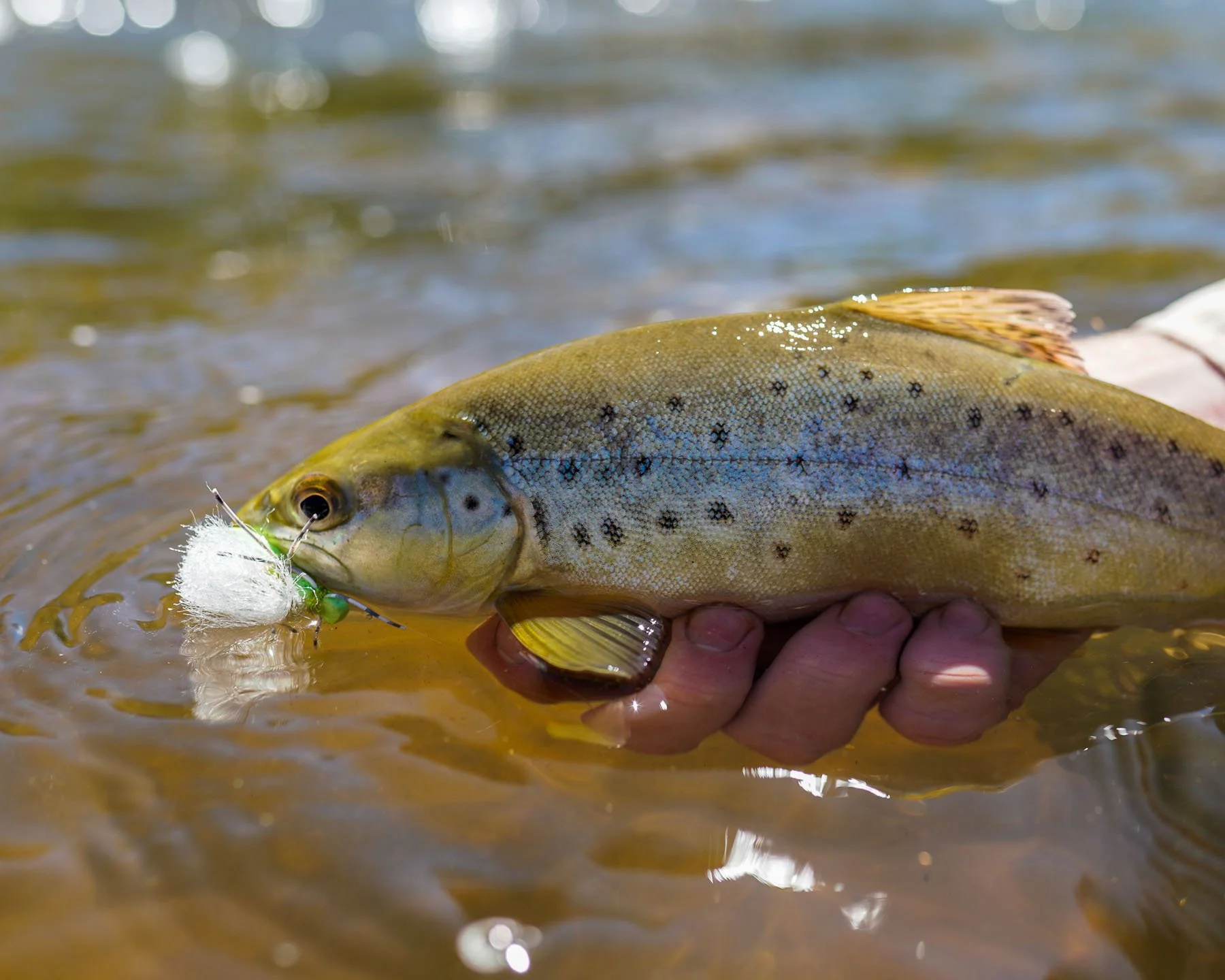Extra-terrestials
Only got 5 mins? Read the minnow version of Extra-terrestials here
Australia is a hot country. It’s a characteristic worn as a badge of pride by many. Australia’s uncompromising summer conditions hold their place in the national identity alongside Phar Lap, the Hills Hoist and Vegemite. Yet in the same breath, when a day of 40 odd degrees rolls around, we chastise the heat and wish it gone forever. It’s a relationship as complex as that with your mother-in law.
Our renowned heat and drought are the preeminent conditions that impact trout behaviour, generally for the worse. Hot, low water levels in the back end of summer, generally throughout the middle of the day, can put a serious handbrake on the fishing activity. Particularly in the low country. Below the 1000m altitude threshold, the effects of an Australian summer seem to be multiplied. As stark and devastating as the impacts of a prolonged drought can be on Australia’s trout fisheries, certain patterns of weather and heat can send the dry fly fishing into hyperdrive. With extended hot, dry spells, the grasshopper population of the prairie grass lined river banks burgeons exponentially. The trout are not unaware of this phenomenon. The increasing volume of terrestrial biomass, suddenly made available atop the surface film has a dramatic effect on their behaviour, resulting in some of the most action packed, engaging fishing you can find in Australia.
Photo credit: Pat Ryan
Grasshopper – the ‘extra’ terrestrial pattern
The grasshopper is a terrestrial insect, meaning it spends the majority of its life on land. Converse to the familiar mayfly or caddis pre-pubescent nymph, the way a grasshopper comes to be on the water isn’t through some practical embryonic function, but rather clumsiness and misfortune. They only become available to trout through poor flying or a misguided ‘hop’. Simply, when they fall into the river. It is acute natural selection, rarely seen so vividly.
The reason grasshoppers turn trout heads more than a standard mayfly is the size of the meal they represent. Powerful legs with a big bulky body and solid core all equate to a portion not worth missing out on. And when the opportunity presents to scoff down on grasshoppers, the trout queue up and abandon all sense of scepticism or scrutiny. Any preconceived notions of incredulous and fickle trout are blown out of the water, and what you are faced with seems to go against the grain of every word spoken, written or heard about trout behaviour
Fishing out of this world
In the heat of summer, the beckoning song of grasshoppers pulled Dom, Pat and I away from watching the cricket like a siren call. As the bite of the afternoon sun lost its severe edge, the appeal to get out and chuck some big foamy dry flies around was too much. Piling into the car, the air conditioner was soon cranked to full, rods stowed away safely and anticipation dialled up to 100. We were en route.
Deciding on a juicy little bit of wadable water, banks lined with tussock grass and seemingly abundance of grasshoppers, we were soon to be wetting lines on a premium hopper fishery under ideal conditions. Shutting boots, slamming doors and forgoing the relief of the air conditioner, we were met with a strong, hot wind as soon as we stepped onto the path to the river. With the sweat soon pooling on our brows, it was difficult to tie on the fly as it persistently dripped off, disrupting our vision. These were minor hindrances, all pointing to great conditions. Jack-jumping our way through the grass and praying we wouldn’t stumble across any charged up tiger snakes, we finally set foot on the water.
The first piece of water we approached was a long, wide riffle, stretching a good 20 metres. It was great holding water for feeding trout. Fast, broken, oxygenated water providing a steady supply of food with good cover from predators, one of the many spots trout like to hide. The first cast Dom sent to the top of the riffle landed with a resounding ‘plop’. The fly stood out like a sore thumb as it bounced its way down the riffle, only disappearing momentarily behind a miniature wave before reappearing, riding high and begging to be eaten. But alas, the first, second and third casts delivered no results. Working the casts from the middle of the river outward to the far bank, Dom was getting closer and closer to the undercut lining the edge of the river. It was the perfect sanctuary for trout to hide from the heat and any overhead threats. The group continued on with a keen sense of anticipation. It is amazing how not a word can be said between three people, yet all are acutely aware that the feeling is ubiquitous. Finally, after Dom launched a great reach cast across-current, his fly disappeared in the blink of an eye, swiftly sipped by the brown trout hiding below the bank. High fives all round as we all broke the golden rule; declaring that this session was going to be red hot, before we had any runs on the board.
Photo credit: Pat Ryan
Not wanting to miss out on the action, Pat and I got stuck in, working a bank each as we continued up the next run. Pat on the left, myself on the right. In our brash enthusiasm, we probably fished a little rough, boosting our casts as far up the run as we could and having the flies drift right the way back on serious lengths. Easy, but somewhat lazy fishing. Not producing any results after 10 minutes, and under the increasing ribbing from Dom that we were yet to register a score, we calmed down a little and put more consideration into our technique. Shorter, more accurate casts, with variations of high sticking and upstream mends to hold the fly in eddies and slower moving seams were called upon. Whilst more work, and technically a little trickier, the change made a difference almost instantly for Pat, hooking up on a nice fish in the shadows of a steep foliage coated bank. We missed the double hook up by moments as I stung my first fish of the day out of a beautiful bubble line, just as Pat was releasing his.
The three of us continued meandering our way upstream, accounting for plenty of fish. It was heaps of fun and a great way to spend an afternoon with mates. But to be hypercritical, to this point we hadn’t caught a really good fish. It’s probably a little indulgent to be unsatisfied with such numbers of 1 and 2 lb fish, but the conditions were of such a standard, that a big fish could be on the cards. We just hadn’t cracked it yet. As the sun edged lower, the mention of turning back to the car was first whispered. It was hot and we were buggered. Catching a bunch of fish is hard work. But casting my eyes to what lay immediately ahead - the next run, was too good to ignore. We had trudged this far, and we may as well hit this last honey hole before wrapping it up. Hopping my way across a few rocks, traversing a dicey blackberry-lined cliff, and dodging the biggest red belly black snake I’d ever seen, had me facing the most likely stretch of water for the afternoon. A solid run on the right hand side transitioning into an easing bubble line, flanked by an incredible looking back eddy on the left. Options for the first cast were endless.
Photo credit: Pat Ryan
Settling on the back eddy, I punched a cast to the top, right up against the base of the rocky outcrop from which the waterfall emereged. The hopper sat high and inviting, incredibly realistic. With mend, after mend, after mend, to hold the fly in the natural flow of the eddy, I thought perhaps the moment had passed. But with one particularly large mend, inducing some movement into the fly, it was suddenly replaced in space and time by an emerging trout snout rolling over the fly. Bringing the fly to life, and adding some movement, had clearly been the trigger. And whenever you see the nose of the fish take to the sky, you know it’s going to be a good fish. This was no exception. Like a tear away, the fish took off for the faster water on the right hand side of the pool. Desperately stripping line, trying to keep tension as it raced downstream towards me with the current, the odds seemed to be on this fish escaping. However, by the grace of the fishing gods, the fish turned back upstream and headed for the eddy from which it came. With this new battleground, I stood a fighting chance. Steering the fish clear of the rocks, and holding it for a time allowed Dom and Pat time to work their way up to me and do the job with the net. It was the perfect culmination to a great day, with the fish in incredible condition. In the brief moments I collected myself and checked gear before turning for home, Pat tried a final cast on the right hand side bubble line of the same pool. A bit of 'Hail Mary’ but worth a try, nonetheless. To our amazement, the fly exploded and Pat too was now into a red hot fish. A similar scenario to the one I had just faced was now unfolding. The only thing was that Pat’s fish was grumpy, tearing back and forth across the pool and giving him the absolute biscuits. It was charged up and Pat just couldn’t get a handle on it. Deciding it could use the current to its advantage, the fish turned on a dime and bee-lined back towards us. Passing by without much of a care, it was headed for the rapids below, surely to be busted off and gone forever. Dom, net in hand again, performed a fantastic last ditch effort with the net wildly sweeping in the general direction of the fish and, luckily, came up trumps.
Photo credit: Pat Ryan
To have a session with so many 1 to 2 lb fish capped off with not one, but two, really solid fish was awesome. Confirmation that when the heat kicks in, the grasshoppers come out. The trout are well and truly dialled in to this and happy to oblige to a well fished imitation pattern. During the next prolonged dry stretch through January and February, why don’t you brave the heat, find some grass lined banks and tie a hopper on. The adrenaline will take you for a ride. And chances are, you’ll have a few good fish to account for your efforts.






